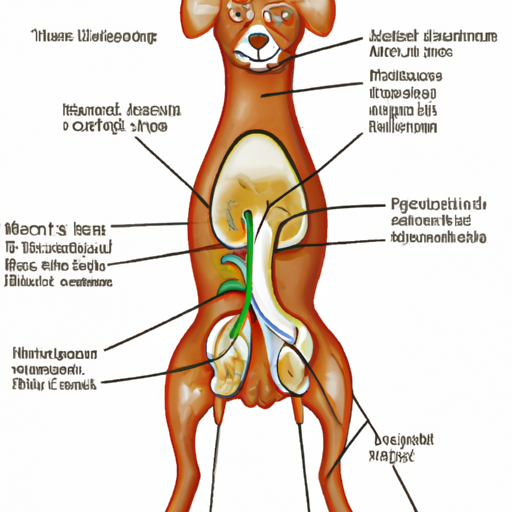Introduction
Hello there, caregiver! It’s you who always puts the well-being of your furry friend before anything else. One might say, quite poetically, you’re the lighthouse guiding them through the stormy sea of life. Today, let’s dive into the sea of knowledge and explore the anatomy of a dog’s kidneys.
Understanding Dog’s Anatomy
Just like humans, dogs too have two kidneys. These are located in the abdominal cavity, right beneath the spine. Picture this, if your dog could stand upright like us, their kidneys would be positioned roughly towards the lower back area. It’s a bit like the kidneys playing hide-and-seek, tucked away, hidden under a blanket of muscles and bones.
Here’s a quick list to help you picture their location:
- Start at the spine.
- Move towards the belly.
- Stop just before you reach the belly.
- That’s where the kidneys are, under the protective cover of the rib cage.
The Role of Kidneys in a Dog’s Body
The kidneys are the unsung heroes in your dog’s body. They’re like the silent knights, fighting off toxins and filtering the blood. Here’s what they do:
- Filter Blood: They remove the waste materials from the bloodstream.
- Regulate Fluids: They balance the levels of water and various essential minerals in your dog’s body.
- Produce Hormones: They make hormones that help control blood pressure and stimulate the production of red blood cells.
Symptoms of Kidney Problems in Dogs
As a vigilant caregiver, you need to be on the lookout for signs that your dog’s kidneys aren’t working as they should. These could include:
- Changes in water consumption
- Urinating more or less frequently
- Vomiting or loss of appetite
- Lethargy or depression
- Weight loss
FAQ
Q: Why are my dog’s kidneys important?
A: Kidneys play a crucial role in filtering waste materials from the blood, regulating bodily fluids, and producing vital hormones.
Q: How can I tell if my dog has kidney problems?
A: Look out for changes in water consumption, urination frequency, appetite, behavior, and weight.
Q: Can kidney problems in dogs be treated?
A: Yes, with early detection and proper treatment, many kidney problems in dogs can be managed effectively. Always consult with your vet if you notice any changes in your dog’s health.
Conclusion
So, there you have it, an in-depth understanding of where the kidneys are located in your dog’s body and their essential functions. Remember, being a responsible caregiver means being vigilant about your dog’s health. After all, they depend on you as much as you treasure them. Keep this knowledge in your arsenal and continue being the super caregiver you already are.
Keep exploring, keep learning, and keep caring because knowledge, after all, is the beacon in the foggy world of uncertainties.



